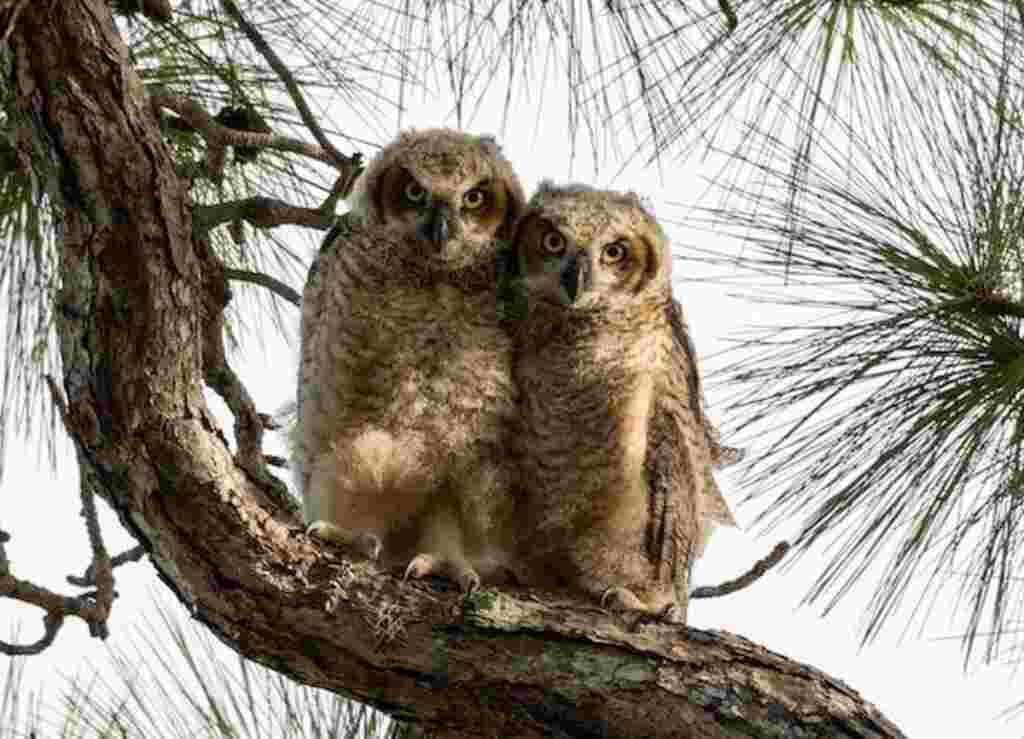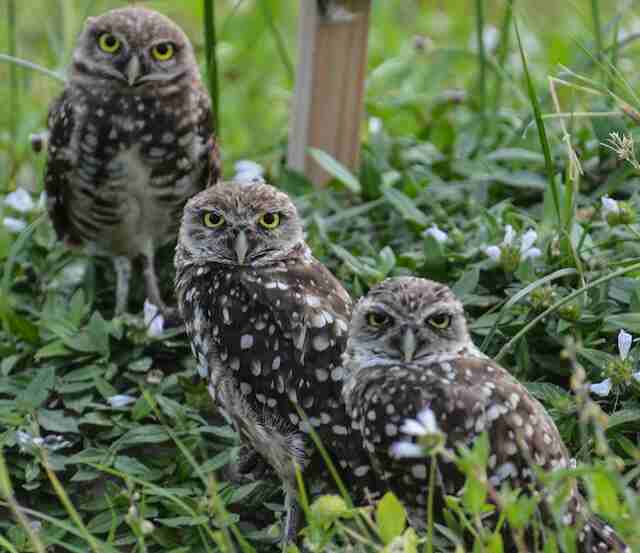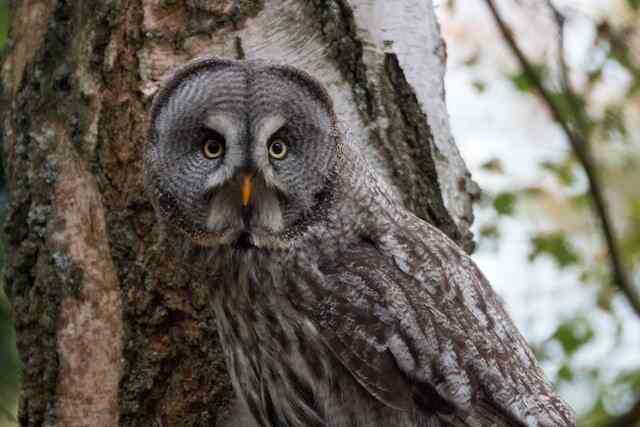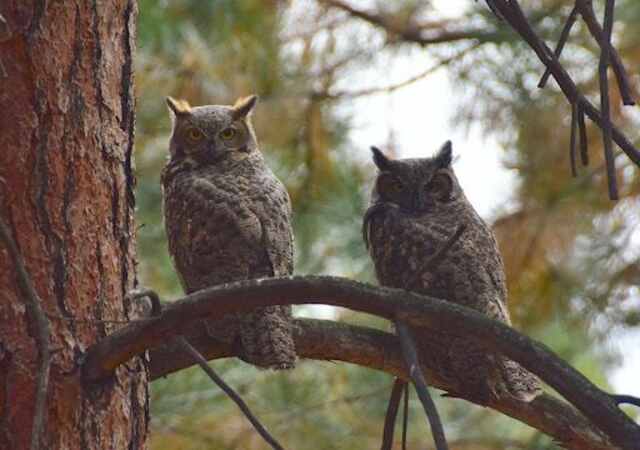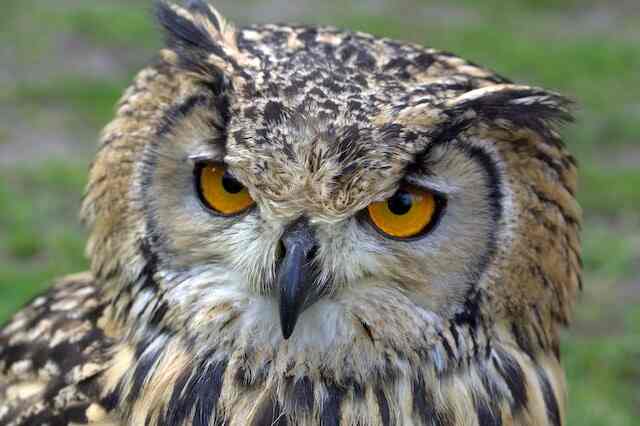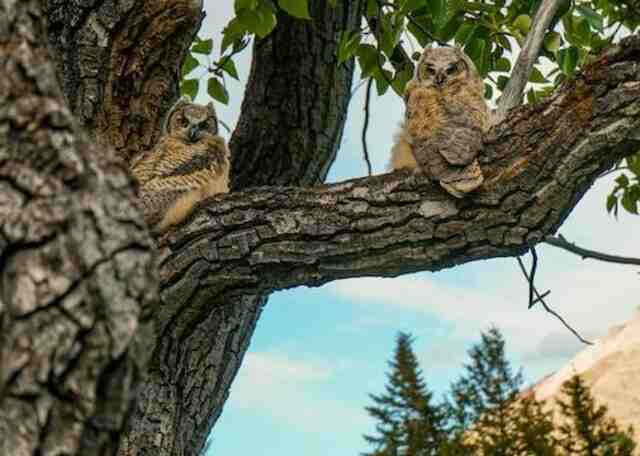“Have you ever wondered if love truly lasts forever, even in the animal kingdom? Well, let me tell you, folks, the answer might just be hootin’ and hollerin’ right in front of our eyes! Do Owls Mate for Life?
The short answer is yes, and the reasons why, will have you falling head over talons in love with these majestic creatures. So grab your binoculars and let’s take a closer look at the love lives of our feathered friends.
Table of Contents
Do Owls Mate for Life?
Throughout the ages, humans have been captivated by the intriguing nature of owls, making them a fascinating creature. One of the most interesting aspects of owl behavior is their mating habits. Do owls mate for life?
Many people wonder if these majestic birds mate for life, and the answer is generally yes. In this section, we will explore the definition of monogamy in owls, as well as the types of owls that mate for life.
Definition of Monogamy in Owls
Monogamy is a term used to describe a mating system in which one male and one female form a long-term pair bond. This bond typically lasts for the duration of the breeding season, and sometimes longer.
In the case of owls, monogamy often means that the male and female will mate for life. This means that they will remain together for the duration of their lives, and will only reproduce with each other.
Types of Owls that Mate for Life
Most species of owls are monogamous, meaning that they form long-term pair bonds with a single mate. This includes the Barn Owl, which is usually monogamous and mates for life, although there are some reports of males with more than one mate.
Similar to many other owl species, Barred Owls form lifelong partnerships and typically produce a single clutch of two to three white eggs annually. Throughout the incubation period, which typically spans 28 to 33 days, the female bird takes on the role of sitting on the eggs while the male bird actively searches for food.
Other species of owls that mate for life include the Great Horned Owl, the Snowy Owl, and the Northern Saw-whet Owl. These owls are all monogamous and will remain with their mate for the duration of their lives.
In conclusion, most species of owls are monogamous and mate for life. This means that they form long-term pair bonds with a single mate and will only reproduce with that mate.
While there are some exceptions to this rule, such as the occasional male Barn Owl with more than one mate, for the most part, owls are faithful to their partners for life.
Breeding and Mating Season
Owls are known for their unique and fascinating mating rituals, which vary depending on the species. Owls usually breed and mate during the winter or early spring, although the exact time may differ depending on the owl species
Some species, such as the great horned owl, may begin nesting as early as December, while others, like the spotted owl, typically find their mate and begin to roost together during February.
Breeding Season
The breeding season for owls typically occurs from March to September. The average clutch size for most species is 2 to 3 eggs, although occasionally 4 are laid.
The female owl is responsible for incubating the eggs, which typically hatch after about a month. Once the eggs hatch, both parents are responsible for feeding and caring for the young until they are ready to leave the nest.
Mating Season
During mating season, the male owl will often engage in courtship displays to attract a mate. These displays can include hooting, wing flapping, and other behaviors designed to demonstrate the male’s strength and fitness. Once a pair has formed, they will typically remain monogamous for the duration of their lives.
Courtship Rituals
Owls have a variety of courtship rituals, which can vary depending on the species. For example, the great horned owl’s courtship display involves a series of hoots and calls, while the snowy owl’s display includes a series of bowing and bobbing movements.
Some species, like the barn owl, also engage in mutual preening, during which the male and female groom each other’s feathers. Overall, owls are fascinating creatures with unique and complex mating behaviors.
By understanding their breeding and mating season, as well as their courtship rituals, we can gain a deeper appreciation for these magnificent birds.
Nesting and Eggs
Nesting Sites
Owls are known to use a variety of nesting sites, including natural cavities in trees, abandoned nests of other birds, and man-made structures such as nest boxes. Some owl species, such as the burrowing owl, even dig their own burrows for nesting.
Clutch Size
The number of eggs in an owl’s clutch varies depending on the species. Barn owls, for example, typically lay 4-6 eggs, while great horned owls may lay 1–5 eggs. The size of the clutch can also vary from year to year, depending on factors such as food availability and weather conditions.
Incubation and Hatching
After laying their eggs, female owls will incubate them until they hatch. The length of the incubation period varies depending on the species, but it typically lasts around 30 days. Once the eggs hatch, the young owlets are completely dependent on their parents for food and care.
Parental Care
Owl parents take turns caring for their young, with one parent hunting for food while the other stays with the chicks. The parents will regurgitate food for the young, and as the chicks grow, they will begin to eat prey that their parents bring back to the nest. The young owlets will typically fledge and leave the nest around 5–6 weeks after hatching.
Behavior and Territoriality
Owls are fascinating creatures with unique behaviors and habits. One of the most interesting aspects of owl behavior is their monogamous mating habits. Owls usually establish a monogamous relationship with their partner and remain together for their lifetime
Monogamy is a common behavior among owls, as they typically mate for life without seeking other partners. However, if one of the owls in a monogamous pair dies, the surviving owl may pursue a new mate to establish a fresh monogamous bond.
Territoriality
Owls are also known for their territorial behavior. They establish a territory that they defend against intruders. During nesting season, they become even more aggressive, particularly the females, sometimes striking intruders with their feet. This behavior is likely due to their strong desire to protect their nest and offspring.
Food and Preening
Owls spend a significant amount of time preening their feathers to keep them in good condition. They also spend a lot of time hunting for food.
Owls are carnivores and eat a variety of prey, including rodents, birds, and insects. They have excellent hunting skills, including keen eyesight and the ability to fly silently to surprise their prey.
Winter Behavior
In the winter, owls may change their behavior to adapt to the colder weather. Some species of owls, such as the Snowy Owl, may migrate to warmer areas during the winter months.
Other species, such as the Great Horned Owl, may stay in their territory and adapt to the colder weather by growing thicker feathers and roosting in protected areas.
Intruders and Divorce
Owls are highly territorial and will defend their territory against intruders. If an owl intrudes on another owl’s territory, a fight may ensue. If the intruder is successful in taking over the territory, the original owner may be forced to find a new territory. In some cases, the original pair may divorce and split up and find new mates. This is known as owl divorce.
Types of Owls that Mate for Life
Barn Owls
Barn Owls are renowned for their exceptional loyalty and commitment to their partners. They form lifelong mating bonds and often revisit their previous nesting sites annually. To reinforce their pair bond each spring, they engage in intricate courtship behaviors that involve vocalizations, flights, and exchange of food offerings. These elaborate rituals are an important aspect of the Barn Owls’ reproductive cycle.
Great Horned Owls
Great Horned Owls are one of the earliest nesting birds in North America, and they mate for life. They are monogamous and fiercely territorial, defending their nest sites from other predators. They typically mate in December or January, and the female lays her eggs in February or March.
Barred Owls
Barred Owls are recognized for forming lifelong mating pairs and typically raise one brood annually. Their nests are at risk of predation from other raptors and mammals like weasels and raccoons. In response to human interference, a parent owl may leave the nest, put on a noisy distraction display with trembling wings, or even engage in an attack.
Eastern Screech Owls
Eastern Screech Owls are content to stay with one partner throughout their lives, only finding a new mate if their first one dies. They are one of the smallest species of owl in North America, and they are found in both red and gray morphs. They are known for their distinctive calls, which can be heard at night.
Tawny Owls
Tawny Owls are one of the most common species of owl in Europe, and they mate for life. They are nocturnal birds that are found in woodland habitats throughout Europe and Asia. They are known for their distinctive calls, which can be heard at night.
Overall, these species of owls are known to mate for life, forming strong bonds with their partners. They are fiercely loyal and committed to their mates, returning to the same nest sites every year and engaging in elaborate courtship rituals to establish their pair bond.
Owls in Captivity and Conservation
Pet Owls
While owls may seem like fascinating pets, it is important to remember that they are wild animals and are not suitable for domestic life. Owls in captivity require special care and attention, including proper housing, diet, and medical care. It is also illegal to keep most species of owls as pets without a special permit.
Conservation Status
Many species of owls are facing threats to their populations, including habitat loss and fragmentation, hunting, and climate change. Owls play important roles in their ecosystems, controlling rodent populations and serving as indicators of ecosystem health.
Endangered Owls
Some species of owls are considered endangered, including the California Condor and the Atlantic Puffin. Efforts are being made to protect and conserve these species, including habitat restoration, captive breeding programs, and public education.
Overall, it is important to remember that owls are wild animals and should be respected as such. While they may seem fascinating and mysterious, their well-being and conservation should be a top priority.
Conclusion
In conclusion, many owl species, including Barn Owls, Great Horned Owls, and Barred Owls, are known to mate for life. This means that they form lifelong bonds with their partners and often work together to raise their young.
While there are exceptions to this behavior, such as with some species of owls that engage in polygamous or promiscuous mating, lifelong monogamous pairs are common among many owl species.

